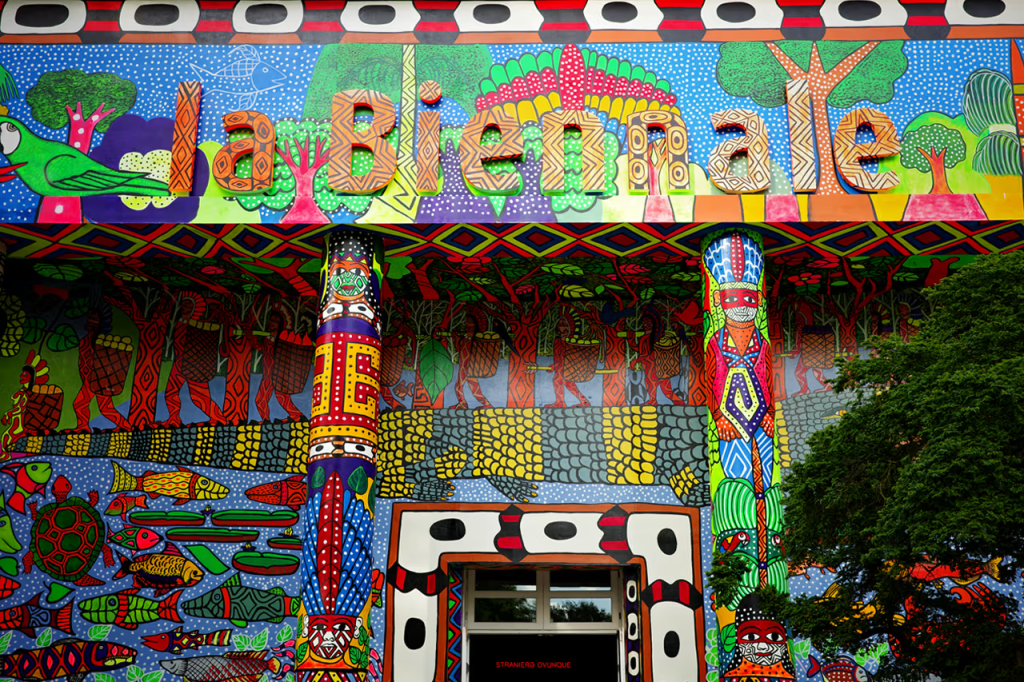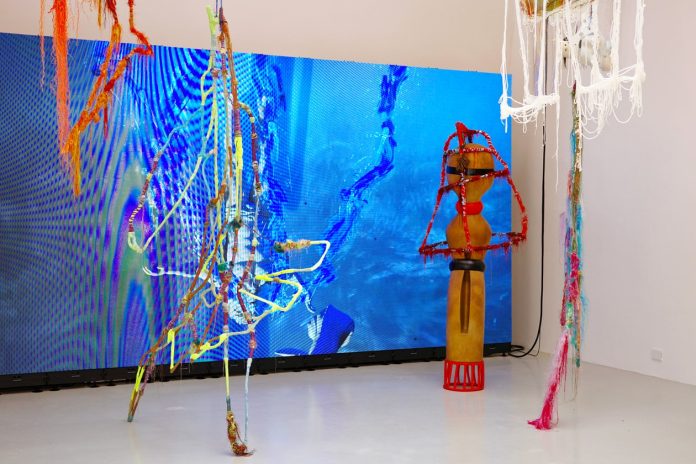The world’s biggest artwork exhibition is again for its sixtieth version, dubbed “Foreigners Everywhere.”
“Stranieri Ovunque” or “Foreigners Everywhere”, became both the slogan and a name for motion for this 12 months’s Venice Biennale, which heralded its first South American curator, Adriano Pedrosa. Founded in 1895 and going on its 60th version, the largest art exhibition inside the world broke a number of social boundaries this year as an array of indigenous artists took middle level representing a number of major pavilions, from Jeffrey Gibson (USA) and Sir John Akomfrah (Great Britain) to Glicéria Tupinambá (Brazil) and Archie Moore (Australia).
The latter artist delved into his own family tree to retrace over sixty four,000 years of Aboriginal histories, emphasizing the discrimination that indigenous communities maintain to face in Australia. “It’s pretty political, however it’s also pretty poetic,” Pedrosa tells The Art Newspaper, describing the name of this year’s Biennale. Venice as a town is a fitting region for the Biennale’s subject. A town that became once a secure haven for Roman refugees, which turned into later colonized by means of both the Austrians and Napoleon Bonaparte, as well as having once served as the most important largest middle of exchange inside the Mediterranean.

Today, Venice is home to more or less fifty five,000 people, however doubles in ability whilst travelers flock to its quaint canals within the high season. There are foreigners everywhere, but as Pedrosa asserts, “anywhere you move, you are always, deep down, a foreigner your self in a extra subjective way—in a psychological, psychoanalytic way of taking into account “the overseas”. It additionally conjures up Freud’s Unheimlich, the well-known text that he wrote on the uncanny, wherein what’s unusual is also quite familiar.”
Spread throughout the metropolis, from countrywide pavilions to auxiliary activities, the sixtieth version of the Venice Biennale is formally underway and Hypeart became at the floor traveling a number of the nice shows to test out even as its on view till November 24.
To kick off the list, we start with the Australian pavilion, winners of the Biennale’s Golden Lion award for 2024. While big LED lighting and towering shows embellished the spaces of many country wide pavilions, the nation down under reverted back to one in all art’s first modes of expression — chalk. Over the closing months, Archie Moore, who’s of Bigambul-Kamilaroi historical past, has been drawing the names of heaps of deceased Aboriginal peoples in fragile chalk on blackboard as a remark at the inconsistent transmission of knowledge and the outcomes these gaps in information have herald on destiny generations.
Curated by Ellie Buttrose, kith and family members starts with Moore’s circle of relatives tree, quick extending up and across the partitions of the distance to cover over 65,000 years of Aboriginal histories, one of the oldest businesses of human beings in the international. Designed by way of architect Kevin O’Brien, who’s of the Meriam and Kaurareg peoples of the Torres Strait, two luminescent white boxes hover over a white table within the center, which holds records of 557 Aboriginal human beings who have died by police brutality for the reason that 1991, with gaps purposefully left among stacks to notice the lapses in our know-how so far. Surrounding the table is a pool of water that acts as a mirrored image on violence, abuse and Australia’s colonial history. “You need to lean across the water to glimpse them,” Buttrose tells the Guardian, “and you see your very own reflection as you do. You turn out to be part of the paintings; you need to examine yourself inside the context of all this loss.”
Scribbled on the partitions are the names of Aboriginals who needed to take at the names given to them by their colonizers, or circles left blank because of erasure or gaps in recorded records. The title of the display, kith and family members refers to buddies and family these days, but it’s earliest definition in 1300’s Old English denotes a native land or countrymen. “I’m simply seeking to provide an impression of this large quantity of time and Aboriginal inhabitation on the continent,” Moore said. “And I’m including everybody in the tree. If we move back three,000 years, humanity all has a not unusual ancestor. So it’s about the human international own family tree as nicely.”
The Hãhãwpuá pavilion, as Brazil’s exhibit has been renamed this year, is the first time its exhibition has absolutely defined the struggles of Brazil’s indigenous communities via indigenous artists themselves. Glicéria and Olinda Tupinambá, who hail from the Tupinambá community of Serra do Padeiro in Northeastern Brazil, labored alongside artist Ziel Karopotó to provide Ka’a Pûera: we are taking walks birds.
The exhibition’s identify refers to harvested terrains that appearance infertile, but reemerge to give manner to a crop of sacred and medicinal plant life. Concurrently, the name alludes to a small fowl that walks Brazil’s jungles, camouflaging itself to the environment, as well as the popular fighting fashion that was first disguised as a dance, however become certainly intended as a shape of self-defence by means of enslaved Africans and indigenous populations in the 18th century.
On view are a chain of drawings, art work, multi-media sculptures, films and installations that tell the persistent resistance of indigenous humans in Brazil, along side exploring themes associated with human rights and the weather emergency. “The exhibition is being held in the year wherein one of the Tupinambá mantles returns to Brazil after a long duration in European exile, where it have been considering that 1699 as a political prisoner,” stated curators Arissano Pataxó, Denilson Baniwa and Gustavo Caboco. “The garment spans time and brings the issues of colonization into the cutting-edge, whilst the Tupinambá and other peoples keep their anti-colonial struggles of their territories – just like the Ka’a Pûera, birds that stroll over resurgent forests.”
Repatriation pervades the various exhibitions across the Biennale, but for the Czech Republic, an emphasis on society’s violent and hierarchal courting to the animal nation is of identical importance. Curated by way of Hana Janečková, The coronary heart of a giraffe in captivity is twelve kilos lighter tells the tale of Lenka the giraffe, the large hoofed mammal who become captured in Kenya in 1954 and shipped to Prague, in which it have become the primary Czechoslovak giraffe. Lenka best lived for two greater years, because it died and its frame turned into donated to the National Museum of Prague whose taxidermy workshops cleared it out and displayed it till 2000.
Artists Eva Kot’átková, Himali Sign Soin and David Tappeser recreated the Czech pavilion to retell Lenka’s tale as a poetic collection of installations, 3-d sculptural iterations of the giraffe’s bones and a captivating stay performance that recreates the animal’s existence and dying. Most straight away seen whilst coming into the space are big tunnels that mimic Lenka’s spindly neck. Aesthetically, the installation appears just like the decor that one could find in a toddler’s playpen. Instead of plush animals, but, the severed limbs of Lenka’s neck, torso, head and inners surround the expanse of the room as target market individuals accumulate around a small hollow in the center of the pavilion.
“What is the distinction among Lenka, the animal displayed in teh zoo and Lenka, the museum object with glass eyes?” asks Janečková. “Interpreted by using kids, educators and older those who have been Lenka’s contemporaries, the set up is conceived of as a collective body facilitating a couple of styles of storytelling.”




